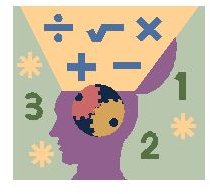Guide for Help with Addition and Subtraction for Elementary Students
Using Manipulatives to Teach Addition and Subtraction
When students struggle with addition and subtraction concepts, the use of manipulatives is helpful. Some children learn through
hands-on study instead of the traditional “display” of numbers on a paper or chalkboard. Special needs children will often times learn math concepts much better with tools and games that they can get a hands-on feel to grasp the ideas through a much more solid method of learning. Manipulatives allow the students to learn through the use of a more concrete method, bringing the equation to “life” so to speak. Tools and various methods are discussed in this guide, to help with addition and subtraction for elementary students.
- Using Smart Boards in Math Lessons
- Tips for Reaching Tactile Learners
- K-8: Calvert Math Teaching Technique
- Fun First Grade Math Activities With a Fall Theme
- Roll the Dice to Learn Addition and Subtraction
- Dynamic Addition With Montessori Stamp Game
- Adding and Subtracting Three-Digits
- Games for Teaching Addition and Subtraction
- Using the Math Strip Board
Addition and Subtraction for Special Needs Children
Children with special needs require a more specialized learning environment. Students with dyslexia or who are blind can be taught math problems through Braille or methods that are variations on regular teaching techniques. Opening the world of math for these students can be a challenge, though highly rewarding. Learning a new approach to teaching children with disabilities can allow the caregiver, tutor, parent or teacher a more relaxed atmosphere. Knowing the child is not as frustrated in the math environment and is finding joy in the skills they are learning creates a more pleasurable, valuable atmosphere, where the child comprehends the lessons on a much higher level. This guide presents an innovative approach to teaching those that have special requirements that need to be met.
- Math Interventions for Special Ed
- Teaching Subtraction With Touch Math
- Helping Students With Learning Disabilities
- Teaching Addition Using Touch Math
- “Math U See” Helping Students With Autism
- A Great Math Lesson for Visually Impaired Early Learner
- Math Dyslexia: Ideas to Help Support Children
- Math Games for Dyslexic Students
- Teacher Tips for Teaching Math to Students With ADHD
Lesson Plans
Getting children excited about math is frustrating for the educator and student both when the child is having a difficult time. One of the main necessary life skills, math opens many possibilities in the child’s adult life and while we know it is a necessity, a mind cannot be forced to comprehend. If there is no interest, there is no learning. The simplest tasks such as cooking or purchasing an item in a grocery store with success relies on the most basic math concepts. Without these basic skills, the student cannot thrive in an everyday life environment.
Innovative lesson plans assist teachers, homeschool educators and involved parents who wish to get children excited about the vital learning process of mathematics. Addition and subtraction are simply the beginning, but creates the foundation for having an interest in math processes later in life. Make learning math skills an interesting hands-on project, and little minds open to the world of mathematics with very little effort on the educators part. These links provide useful lesson plans for anyone undertaking the task of teaching the basic skills.
- Math Lessons With Ten Little Fish by Audrey Wood
- Party Time With Math
- Lesson Plans on Subtraction
- Teaching Elementary Addition With Clifford, the Big Red Dog
- Math Unit Lesson Plans for 3rd Grade Level
- Math Assessments Using Subtraction Word Problems
- Different Types of Math Story Problems Using CGI
- Teaching the Order of Operations
- Order of Operations Practice: 5th Grade Level
Using Technology to Teach Math Skills
When most of us adults attended elementary classes, we were told we could not use calculators. Now, schools are asking parents to purchase these tools for use by students in math classes. Applications on iPhones and iPods, as well as calculators and hand-held games are prominent in marketing throughout various venues and can be quite an asset when teaching math skills. Online math games keep children invested in their mathematical skills, while having the opportunity to advance in their quest, they learn, learn, learn!
Several sites invite youngsters to conquer the games they host. This guide includes a couple of the best sites to help learn the basics of math. Online games are a tremendous help when it comes to teaching math skills. It keeps the attention focused and the learning process takes place, without the student even knowing most of the time!
- Interactive Technology for Special Education Teachers
- Assistive Technology Checklist
- Assistive Technology for ADHD Students
- Using Online Math Programs for Building Math Skills
- Finding Assistive Technology Devices for Students With Specific Needs
- The Top 10 iPod Touch Apps for Math
References
- Paula’s Special Education Resources: The Math Page, http://www.paulabliss.com/math.htm
